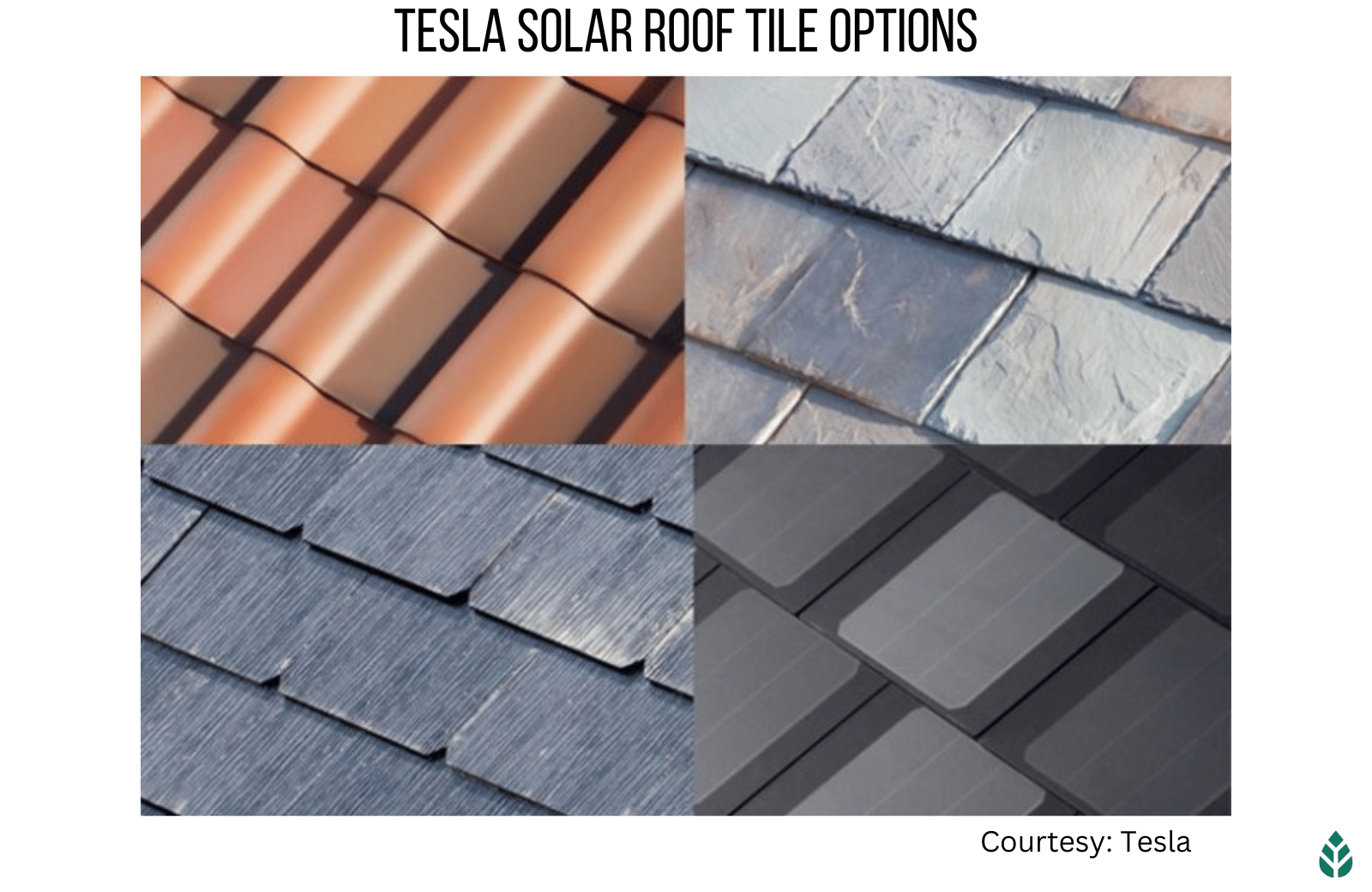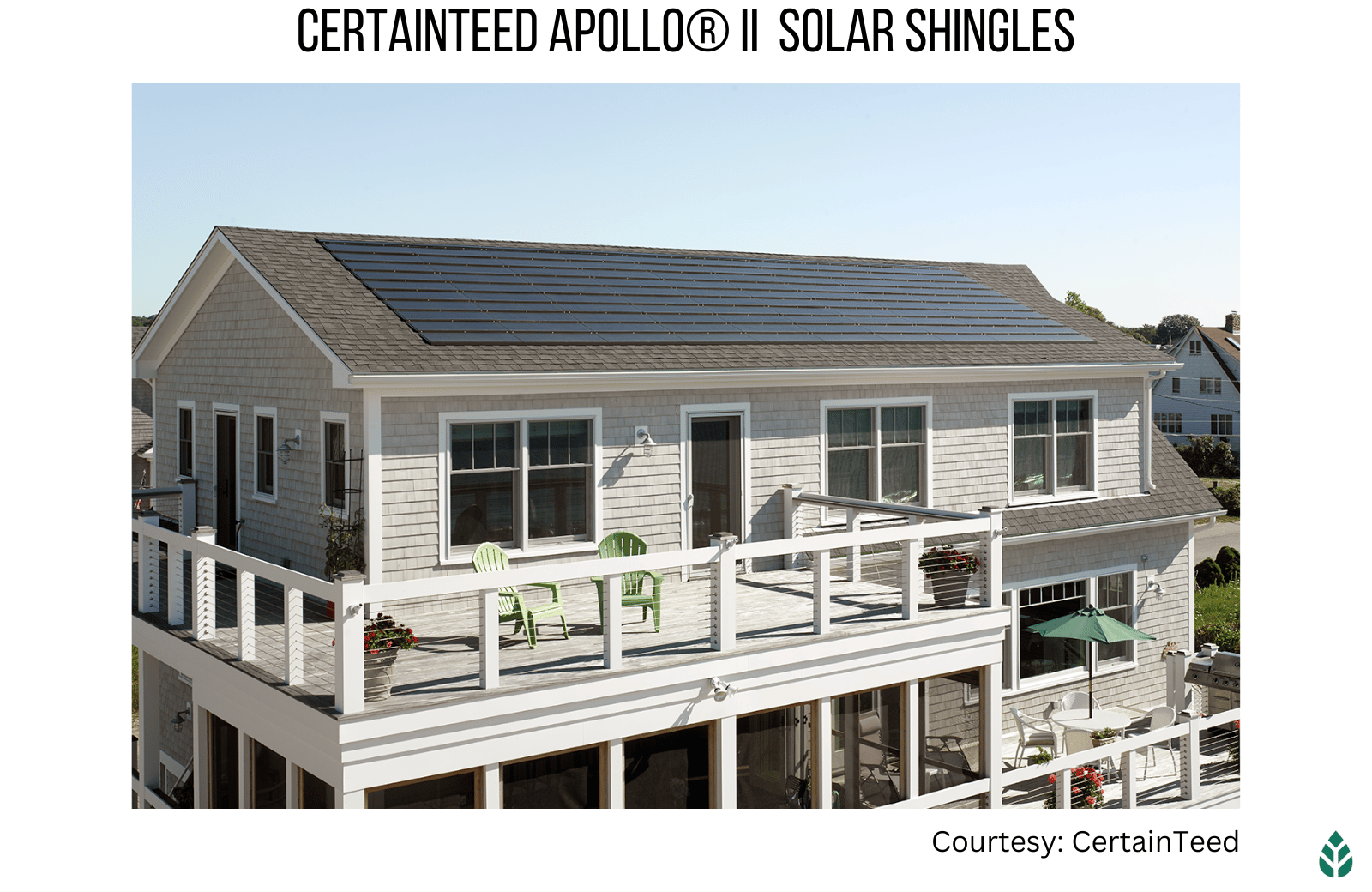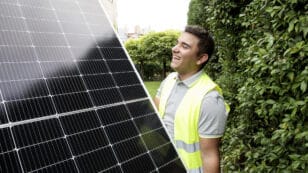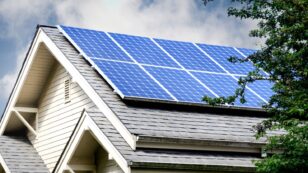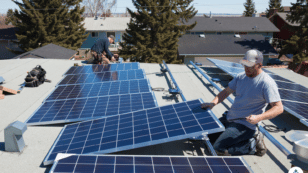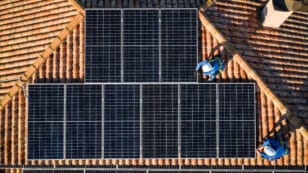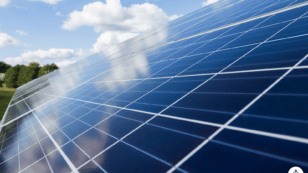
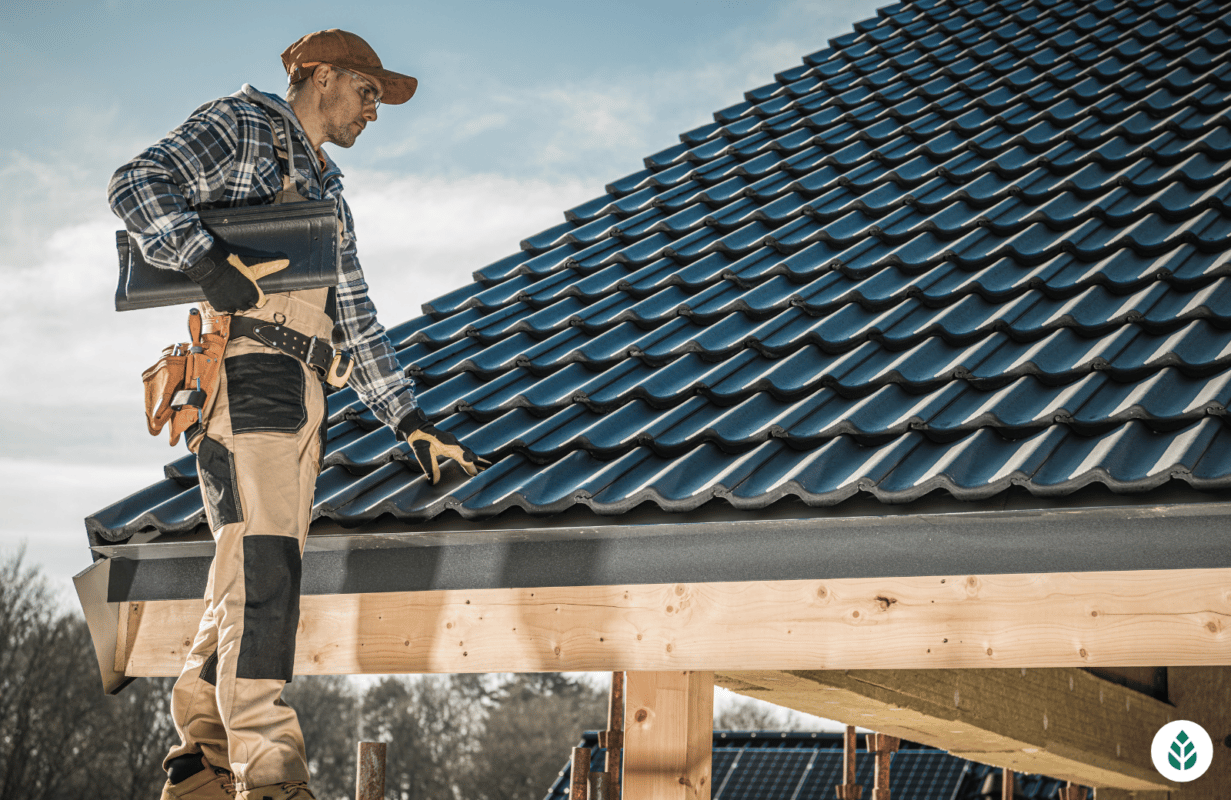
Solar Roof Shingles 2024 Cost and Buying Guide
Average Solar Roof Shingles Cost: $25,000 – $60,000
- Solar shingles are more durable than solar panels
- Solar shingles are one of the most energy-efficient roofing materials
- On average, solar shingles run between $15 to $35 per square foot
Each product and or company featured here has been independently selected by the writer. You can learn more about our review methodology here. If you make a purchase using the links included, we may earn commission.
Solar Shingles Cost is High Up Front But ROI is Higher
The average cost of solar roof shingles ranges between $25,000 to $60,000, or between $15 to $35 per square foot, for the average U.S. roof size of 1,700 square feet. The total cost will depend on the solar roof tile brand and the roofing contractor you choose for installation.
Compared to traditional solar panels, solar shingles are much more aesthetically pleasing. They look like mini solar panels shaped in the form of traditional roof shingles, allowing homeowners to bypass the bulky appearance of standard photovoltaic (PV) panels.
If you are interested in adding solar panels to your new roof, solar shingles are a much more cost-effective option. With solar shingles, you’ll knock out the cost of a roof replacement and the cost of a renewable energy system with one combined price tag.

Blue Raven Solar
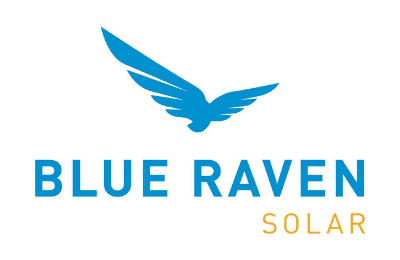
Regional Service
Average cost
Pros
- Industry-leading in-house financing
- Competitive pricing
- Excellent reputation
Cons
- Doesn't offer solar batteries (coming 2022)
SunPower designs and installs industry-leading residential solar and storage solutions across all 50 states. With a storied history of innovation dating back to 1985, no other company on this list can match SunPower’s experience and expertise.
SunPower earns its position as the top national installer on our list for a handful of reasons: It installs the most efficient solar technology on the residential market, offers the most expansive service area and backs its installations with a warranty well above the industry standard. All the while, SunPower pioneers sustainability efforts within the industry.
If that weren’t enough, SunPower systems come packaged with products all manufactured in-house by its sister company, Maxeon. This means that your panels, solar cells, inverters, battery and EV chargers are designed to work together and are all covered under the same warranty.
SunPower’s biggest downside? Its high-efficiency panels are considerably more expensive than most of its competitors’ products. However, its powerful panels are workhorses that make up for the initial cost with more backend production (think about this like spending more money for a car that gets more miles per gallon).
Facts and Figures: Blue Raven Solar
| EcoWatch Rating |
|---|
| Better Business Bureau (BBB) Rating |
| Year Founded |
| Average Cost ($-$$$$$) |
| Solar Services |
| Brands of Solar Equipment Offered |
| Warranty Coverage |
| 4.5 |
| A+ |
| 2014 |
| $$ |
| Solar Panels, System Monitoring |
| Trina Solar, Canadian Solar, SolarEdge, Silfab, SunPower |
| 25-year manufacturer warranty; 10-year workmanship warranty, 2-year production guarantee |

Blue Raven Solar

Regional Service
Average cost
Pros
- Industry-leading in-house financing
- Competitive pricing
- Excellent reputation
Cons
- Doesn't offer solar batteries (coming 2022)
We like Blue Raven Solar because it understands that, for most homeowners, the cost of solar presents the biggest barrier to entry.
For that reason, Blue Raven Solar developed an innovative solar financing plan that offers in-house, flexible, zero-money-down options. The results speak for themselves, as Blue Raven Solar is now one of the fastest-growing solar companies in the nation and was recently acquired by SunPower. Its BluePower Plus+ plan (exclusive to Blue Raven) mimics the flexible structure of a lease while still providing the greatest benefits of owning your system.
Eligible homeowners enjoy 18 months of solar power before having to pay their first bill. When coupled with the federal solar investment tax credit (ITC), the initial energy savings can offset more than a third of the overall cost of a system before requiring a dollar down.
In contrast, other installers can only offer similar financing through solar leases, PPAs or third-party providers (such as Mosaic or Sunlight). Third-party loan providers can complicate the process, while opting for a loan or PPA will disqualify you from some of solar’s biggest benefits (additional property value, federal solar tax credit and local solar incentives).
Facts and Figures: Blue Raven Solar
| EcoWatch Rating |
|---|
| Better Business Bureau (BBB) Rating |
| Year Founded |
| Average Cost ($-$$$$$) |
| Solar Services |
| Brands of Solar Equipment Offered |
| Warranty Coverage |
| 4.5 |
| A+ |
| 2014 |
| $$ |
| Solar Panels, System Monitoring |
| Trina Solar, Canadian Solar, SolarEdge, Silfab, SunPower |
| 25-year manufacturer warranty; 10-year workmanship warranty, 2-year production guarantee |
Cost of Installing a Solar Shingle Roof
The overall cost for a solar shingle installation ranges between $25,000 to $60,000 for the average U.S. home, which comes out to around $15 to $35 per square foot.
But unlike regular shingles, shingles with solar cells — a type of building-integrated photovoltaic (BIPV) technology — are priced per watt, not per square foot. The cost of a solar shingle ranges between $3.50 and $8.00 per watt depending on the brand. Compared to the average cost of solar panels — $3.33 per watt in the U.S. — solar shingles are significantly more expensive for a system with a similar output.
Most solar companies don’t advertise pricing online, but market research shows the total cost of a solar shingle installation is typically 15%-25% higher compared to a traditional solar panel system installation. The national average solar panel installation costs roughly $30,000, which puts the national average solar shingle installation at around $36,000.
Of course, there are some outliers. For example, a Tesla Solar Roof may cost as much as $70,000 or more for full roof installation, while the budget-friendly SunTegra solar shingles may run closer to $20,000 for the entire roof.
While solar roof shingles cost substantially more than asphalt shingles, you’ll be producing your own electricity, therefore lowering your electric bills (or in some cases completely offsetting) by producing your own clean energy.
“A solar roof is a great and obvious way to reduce energy use and has the added benefit of being environmentally friendly,” said David Snyder, CEO of Nova Home Buyers, LLC.
If you go solar, you’ll also be eligible for solar financial incentives and rebates, like the 30% federal tax credit and net metering credits. Keep in mind that these are also available for solar panels, although the typical credit amount will be higher for solar shingles than it will for panels due to the cost difference.
You can expect an average credit value of around $8,991 (30% of the typical system cost of $29,970) for solar panels, while the credit should be closer to $10,789, with an average solar shingle installation cost of $35,964 before the credit.
How to Calculate the Cost of Your New Solar Roof Shingles
As discussed, BIPV solar shingles are priced per watt. So to calculate the cost of your solar shingle roof, you’ll need to know how much solar power you need to power your house.
The only way to know the exact cost of your solar roof is to get a professional estimate, but you can get a rough estimate yourself by walking through the follow the following steps:
- Find out how much energy your home consumes (typically found on your energy bills)
- Assess your roof space and the amount of sunlight your home receives
- Figure out the average system size in your area to estimate necessary system size (you can also use our solar calculator to find an estimate)
- Check the wattage of the shingles you intend to purchase
- Divide the required wattage of your system by the solar panel wattage
The average U.S. home needs a solar system that produces 9,000 watts (or 9 kilowatts) to completely offset their utility bills. With the cost of solar shingles ranging between $3.50 and $8.00 per watt, a 9,000-watt solar shingle installation would range from $31,500 to $72,000.
The table below includes a quick look at average solar roof costs by state. These numbers assume you use the average amount of electricity for your area, see the typical solar irradiance for your state, and pay the average cost in your state for solar roof shingles.
| State | Average Solar Roof Cost |
| Alabama | $51,336 |
| Alaska | $22,536 |
| Arizona | $41,538 |
| Arkansas | $41,844 |
| California | $23,976 |
| Colorado | $31,680 |
| Connecticut | $31,410 |
| Delaware | $34,844 |
| Florida | $41,952 |
| Georgia | $43,428 |
| Hawaii | $22,374 |
| Idaho | $39,120 |
| Illinois | $30,960 |
| Indiana | $41,724 |
| Iowa | $39,636 |
| Kansas | $34,560 |
| Kentucky | $40,392 |
| Louisiana | $50,850 |
| Maine | $26,208 |
| Maryland | $40,440 |
| Massachusetts | $29,016 |
| Michigan | $30,408 |
| Minnesota | $34,560 |
| Mississippi | $45,126 |
| Missouri | $39,312 |
| Montana | $34,776 |
| Nebraska | $44,730 |
| Nevada | $36,480 |
| New Hampshire | $29,406 |
| New Jersey | $28,308 |
| New Mexico | $28,980 |
| New York | $27,456 |
| North Carolina | $40,446 |
| North Dakota | $41,448 |
| Ohio | $34,452 |
| Oklahoma | $44,088 |
| Oregon | $37,392 |
| Pennsylvania | $33,252 |
| Rhode Island | $26,496 |
| South Carolina | $43,164 |
| South Dakota | $39,186 |
| Tennessee | $46,224 |
| Texas | $43,884 |
| Utah | $30,240 |
| Vermont | $25,848 |
| Virginia | $44,220 |
| Washington | $20,520 |
| West Virginia | $44,352 |
| Wisconsin | $27,888 |
| Wyoming | $35,532 |
But don’t let those numbers scare you. Remember, your solar shingles don’t need to power your entire home.
Having a roof that produces any amount of clean energy can still significantly reduce your energy bills and your carbon footprint, making it much more impressive than a regular roof made of asphalt.
Factors That Go Into Solar Roof Shingle Pricing
Solar panel shingles are primarily priced based on watt, so that will have the biggest impact on the total installation cost of your solar roof. However, there are a few other considerations to discuss.
Type of Solar Shingle
Solar shingles are often made from the same semiconductor material as most thin-film solar panels, which is copper indium gallium selenide. This material typically has 12-14% efficiency.
Most standard residential solar panels are instead made of monocrystalline silicon, which has efficiency closer to 20%. While there are some monocrystalline solar shingles, expect to shell out a lot more money for them.
Some brands also offer different variations of solar shingles that may be priced differently, including solar tiles and solar glass roofs.
Solar Shingle Manufacturer or Brand
Certain solar brands will cost more than others. For example, a Tesla Solar Roof may cost you $70,000, but you’ll be paying for the sleekest, highest-efficiency solar tiles in the market. If you’re more concerned about budget, you may want to opt for a brand like SunTegra.
Not all solar companies offer BIPV, but here are a few that do:
-
-
- CertainTeed Solar (Apollo shingles)
- GAF Energy (Timberline Solar)
- Luma Solar
- SunTegra
- Tesla Solar
-
Since the majority of your total will go toward the materials, the manufacturer you choose will play a massive role in your pricing. You’ll see material costs for the following including in your quote:
- The solar shingles themselves
- Wiring to connect your shingles to your electrical panel
- An inverter to convert DC solar power to usable AC electricity
- Conduit to protect your wiring
- Mounting hardware
Basic Labor Cost and Time to Complete Solar Shingles Roof Installation
Each solar installer will have varying labor costs, typically priced per hour. That also means the longer it takes the roofers to complete your solar roof installation, the more you’ll be paying for labor. The labor generally includes the following services:
- Removing your existing roof shingles
- Replacing the underlayment, if necessary
- Installing mounting brackets for your solar roof shingles
- Mounting the solar shingles
- Wiring the shingles in series
- Running conduit from your new solar roof down to your electrical panel
- Connecting the panels in series to your panel
- Installing an inverter to convert DC solar power to usable AC electricity
Labor costs often vary by location, even for the same national installer.
Pro tip: Solar shingles are a new technology that not all roofing contractors have ample experience installing. Inexperienced contractors will take far more time to complete a solar shingles installation, therefore driving up labor costs. Try to find a contractor that has experience installing solar shingles if you want to keep labor costs low.
While solar roofs are still relatively new, roofing professionals have told EcoWatch that they’re catching on to the benefits.
“I am very excited about the possibility of solar roofs,” said Marty Ford, Shingle Master and President of Bullet Proof Roof Systems. “[Solar roofs] can help to lower your energy bills and even make your home self-sufficient. I think this is a technology that has a lot of potentials, and I anticipate entering the field in the near future.”
Removing Your Current Roof and Dump Fees
Unless you’re building a new home, your solar roof installer will need to remove your existing roof, which will add to your installation cost. There’s no standard removal cost, as it will vary depending on the company, the type of roofing material and the difficulty of the removal.
Most roofers will have additional fees for roof disposal.
Size and Complexity of Your Roof
Obviously bigger roofs will require more material and longer labor times, therefore costing more than smaller roofs.
Roofers won’t just take size, but also the complexity of your roof into consideration when factoring costs. If your roof is exceptionally steep, tiered or if it has a lot of obstructions (chimneys, skylights, ventilation systems etc), expect additional installation fees.
Pros and Cons of Installing Solar Roof Shingles
Here’s a quick look at the advantages and disadvantages of installing solar roof shingles:
| Pros of Installing Solar Shingles | Cons of Installing Solar Shingles |
|
|
Generally speaking, it’s still going to be much more financially beneficial to install solar panels than it will to opt for solar roof shingles. A typical solar array will cost around 20% less than installing solar roof shingles.
However, there are a few key considerations to make. First, many people choose solar shingles if they don’t like the look of solar panels. Shingles are much sleeker and more modern, so the added investment might make sense for you if you prioritize aesthetics.
Solar shingles also have less of a chance of leading to roof leaks, so it’s possible you could end up paying less over time for solar roof shingles if a poor panel installation leads to expensive water damage in your home.
Ultimately, you’ll have to decide for yourself if solar shingles are right for you. Just remember that they’re more expensive than installing solar panels, so they’re likely only worth it if you value the appearance of your solar array over minimizing the cost.
Lifetime and Durability of Solar Roof Shingles
Solar shingles are still a relatively new technology, but almost all solar shingle roof installers offer at least a 25-year warranty, so it’s safe to assume solar roof shingles will last at least 25 years.
For example, Tesla Solar offers a 25-year warranty for its solar roof that protects against design defects and weather damage, as well as a module warranty that guarantees power output of at least 95% for the first five years and a decline by no more than .05% for the following 20 years.1
Despite the 25-year warranty, Tesla CEO Elon Musk has boasted that the solar roof will last 30 years.2
CertainTeed offers a 25-year warranty that covers installation workmanship and product, but only a 12-year warranty for the inverters and 10-year coverage for weather damage.
It’s worth mentioning that solar roof shingles aren’t going to last as long as most other roof materials, so while they provide savings on your electric bills throughout they’re lifetime and are likely worthwhile in the long run, you’ll also have to replace them more often.
| Roof Material | Average Roof Lifespan |
| Asphalt Shingles | 10 to 30 years |
| Clay | 50 to 100 years |
| Metal | 50 to 100 years |
| Slate | 50 to 100 years |
| Solar Shingles | 15 to 30 years |
| Wood | 15 to 20 years |
Are Solar Shingles Environmentally Friendly?
Installing solar shingles will not only reduce your electric bills but also your carbon footprint. Helping the environment is one of the top reported reasons why homeowners get solar panels.
The average U.S. household produces a whopping 7.5 tons of CO2 equivalents per year.3 So switching to a clean energy alternative, like solar roof shingles, can significantly reduce your household’s reliance on electricity from natural gas, coal or a nuclear power plant.
Unfortunately, not all homes can accommodate solar shingles. If you’re looking for another eco-friendly roofing material, consider switching to a metal roof. When comparing metal and asphalt shingles, metal is much more energy-efficient and can save you up to 30% on cooling costs.
Financing Your New Solar Roof Shingles
Solar roof shingles are one of the most expensive roofing materials, but yield the highest return on investment (ROI). Fortunately there are also some solar financial incentives available to homeowners who install solar shingles.
-
-
- Federal tax credit: Installing a solar roof qualifies homeowners for the federal solar tax credit equal to 30% of their total solar roof installation cost.
- State tax credits: Some states offer tax credits similar to the one from the federal government. Combined, these tax credits can significantly reduce the cost of your solar shingle installation.
- Solar loans: Most solar shingle roof installers offer in-house solar loans but they’re also available from banks and other third-party lenders.
- Insurance reductions: Because solar glass is more durable than asphalt shingles, you may be able to secure a homeowner’s insurance reduction from your insurance company.
-
The ROI of your Solar Roof Shingles
Multiple statistics prove solar panels increase home value, and most of those studies and surveys were conducted with traditional, bulky solar panels in mind — the ones that are far less attractive compared to solar shingles.
That means you can expect a bigger ROI for installing solar roof shingles over solar panels.
According to Remodeling Costs, BIPV solar shingles produce an ROI between 50% and 80% depending on style and type of installation.4 For a $30,000 solar roof installation, you’d be looking at a home value increase of between $15,000 and $24,000. Or if you opted for a high-end $70,000 Tesla Solar roof, your home increase would be closer to $35,000 to $56,000.
Costs of Maintenance and Repairs for Solar Roof Shingles
Because solar roof shingles involve complex PV equipment, you typically can’t call your neighborhood company for roof repair quotes as you normally would. Although there are exceptions, like if the damaged panels are non-solar or if you need emergency roofing repair after hours.
The good news is that, as discussed, most solar shingle roof installers offer a 25-year warranty that covers repair and maintenance issues, so you shouldn’t have many costs for maintaining and repairing your solar roof.
Be sure to speak with your solar roofing installer about what is and isn’t covered under the warranty before installation.
Costs of Cleaning Your Solar Shingles
There’s very little cost data available for cleaning solar roof shingles, as they’re still a relatively new roofing option. But to get an idea, the average household pays between $300 and $600 for solar panel system cleaning.
It’s typically recommended to clean solar panels once a year, although it could be more or less depending on where you’re located and what type of elements you’re facing. The most common way to clean a solar roof is with water, although new technology is changing the process of solar panel cleaning to become waterless.
Rain and snow also act as natural cleaners for solar panels, as water helps to keep them free of dirt and debris obstructions. However, the smoothness of the glass may also lead to a lot of debris in your gutters, so you may want to couple your solar roof installation with durable gutter guards.
Are Solar Roof Shingles Worth the Cost?
The cost of installing solar panels has dropped significantly, but solar roof shingles and tiles are still relatively new and, therefore, more expensive compared to standard panels.
However, if you’re a good candidate for solar panels and a solar installation company tells you that you’ll need a new roof, it might be worth opting for solar roof shingles instead of paying for a roof replacement and a solar panel installation.
Remember that going solar is an investment that will lead to energy savings over time. Not to mention solar roof shingles look much more attractive compared to solar panels, so they’ll save you on energy costs and increased home value. If you still aren’t sold on shingles but do want to have solar with your new roof, installing both at the same time is the best way to go.
Switching to solar also makes you eligible for several financial incentives that can help to lower the cost of your solar shingle installation.
FAQs: Solar Shingles vs Solar Panels
If you’re thinking about switching to solar shingles, here are some other questions you may have:
Yes, solar roof shingles are a good investment as they’ll increase your home value and decrease your energy bills. According to Remodeling Costs, BIPV solar shingles produce an ROI between 50% and 80% depending on style and type of installation.5
While most solar shingles are made to be fairly durable, and can probably accommodate you walking on them, you probably don’t want to walk on your roof any more than is necessary.
Most solar roof shingles are said to last between 25 and 30 years, with most solar roofing options protected by a 25-year warranty.
Given the high cost of solar shingle installation, they are unlikely to ever “pay for themselves.” However, they can reduce your monthly electric bills considerably; factor in tax incentives and increases to your property values, and shingles can certainly be a reasonable investment.
Whether solar shingles are worth it for you will likely depend on how much it would cost for you to install a standard solar panel array.
Related articles
Related Solar Energy Guides
- Solar Shingles Vs. Solar Panels in 2023 (Cost, Efficiency & More)
- DIY Solar Panels: What You Need to Know
- Solar Net Metering: What You Need to Know
- How Long Will Your Solar Panel Payback Period Be
- Thin-Film Solar Panels: What You Need to Know
- Tesla Powerwall Review (Is It Really Worth It in 2023)
- Monocrystalline Vs. Polycrystalline Solar Panels (What’s Best)
- Bifacial Solar Panels Guide (Prices, Manufacturers & More)
Comparing authorized solar partners
-
- Industry-leading in-house financing
- Competitive pricing
- Excellent reputation
- Doesn't offer solar batteries (coming 2022)
A+Best Solar Financing2014Trina Solar, Canadian Solar, SolarEdge, Silfab, SunPower25-year manufacturer warranty; 10-year workmanship warranty, 2-year production guarantee
Having trouble deciding? Click below and use our process to receive multiple quotes instead:

 233k
233k  41k
41k  Subscribe
Subscribe 



